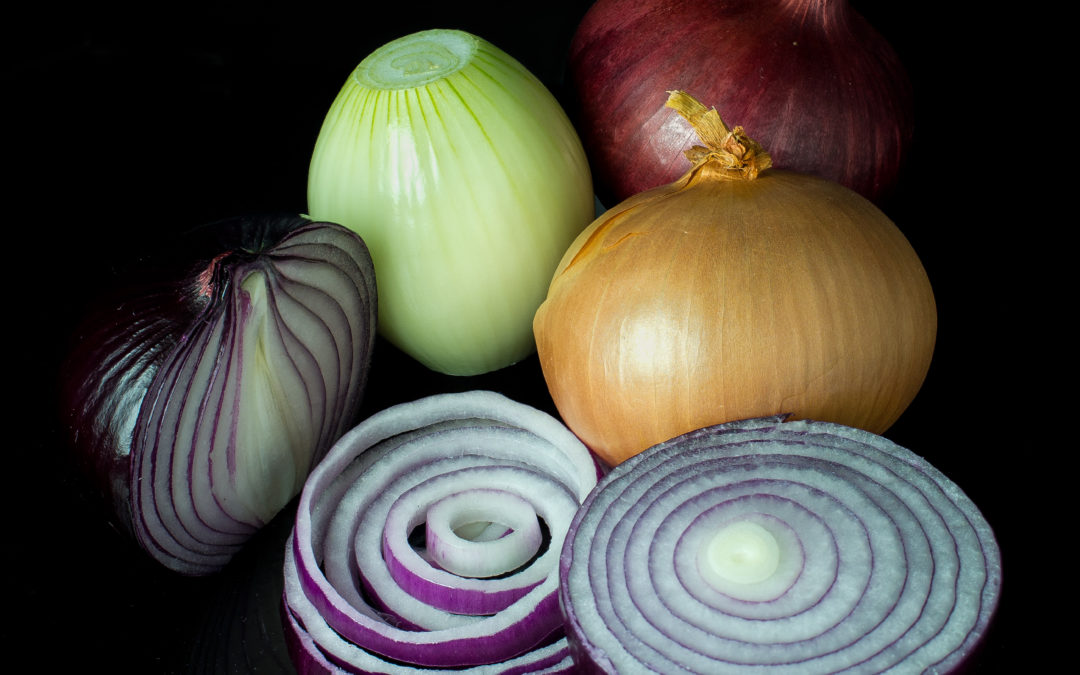Different types of onions will have different uses. But what are the differences? Does it really matter for the recipe you are trying out? If a recipe asks for an onion, but doesn’t tell you which kind to use, which do you go for? Or if it asks you for one kind, can you substitute for another without significantly changing the end result?
Onions aren’t all the same and have their own individual traits, and while it is not a big problem to swap them around, knowing the differences between them and which ones are better suited might change your recipes for the better.
- Yellow onions:
This kind usually has the strongest flavour. They are the everyday onion you can easily use for everything. These are usually the easiest to find, and chances are, if you don’t really know the difference between different kinds of onions, these are the ones you will have at home. If a recipe doesn’t specify what kind of onion you should use, this is your go to. They are extremely versatile.
If eaten raw, the taste can be quite strong, but when cooked they turn softer and sweeter. The longer you cook them, the sweeter they will be.
- Sweet onions:
These look similar to yellow onions but are usually larger, flatter and their colour is not as vibrant. As the name suggests, these are one of the sweetest types and their flavour is not as strong. Because of this, they are very good when eaten raw and even better when cooked. They get sweeter the longer you cook them so if a sweet taste is not what you are looking for, you’ll be better switching back to the yellow kind.
- Red onions:
The best kind for when you need your onion raw, as their flavour is milder the other ones. Because of their nice purple colour, they make dishes looks more appetising, specially salads. Their mild flavour can become stronger with time, and some varieties are sweeter than others. If the taste is still too strong for you, it can be toned down by soaking the onions in water before using them.
- White onions:
These can work nicely as a substitute for yellow onions, but you need to keep in mind that they have a stronger flavour, especially when raw. When cooked, they mellow and become sweeter, but their flavour is still more noticeable than the yellow onions. These are usually also crunchier and hold their texture far better when compared to the yellow kind.
- Shallots:
These are milder than the rest and are great for when you don’t want a strong onion flavour. Smaller and brown coloured, these separate into individual cloves, much like garlic does, and some people say they can taste quite garlic-y too. They are good if you’re looking for an onion that is more easily minced finely, as these are composed of thinner layers.
- Green onions:
Also known as scallions, these are onions that have been picked before the bulb has formed. Usually, the entire plant is used. Their flavour is quite mild but usually the darker green ends will taste stronger than the rest of the plant.
M&P Engineering is a world leading UK based manufacturer of food processing equipment, including onion peeling machines, food filling equipment, food depositing machines and sachet filling machines. M&P Engineering boasts over 50 years’ experience designing, manufacturing and supplying food processing machinery and offers a wide range of equipment, such as the inline filler and the multi head depositor.
M&P Engineering’s large onion peeler uses a dry peeling process, resulting in no waste slurry. It can peel, top and tail onions with diameters between 45mm and 115mm using its self-adjusting floating knife assemblies. The peeler uses compressed air to remove the skin, resulting in optimum end-product appearance. The large onion peeler has a raw material input rate of 750kg per hour when working at optimum speeds, but can be adjusted to suit the needs of the processor. M&P Engineering also stocks a range of used food processing equipment to suit all budgets.
If you would like to find out more information about M&P Engineering’s large onion peeler, call on +44 (0)161 872 8378 or contact us here.

